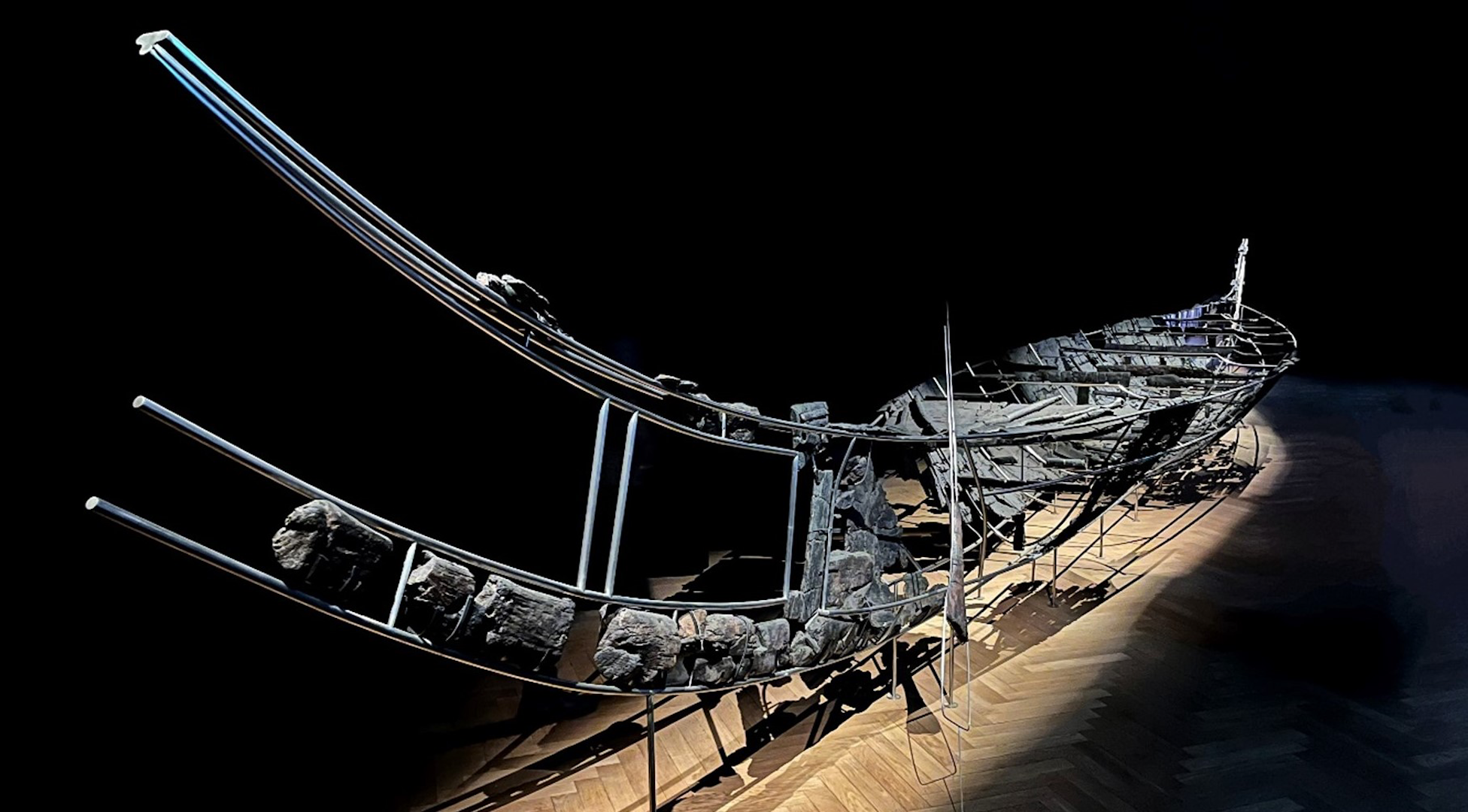'Plain of Jars', one of the most mysterious archaeological sites, reveals its true age
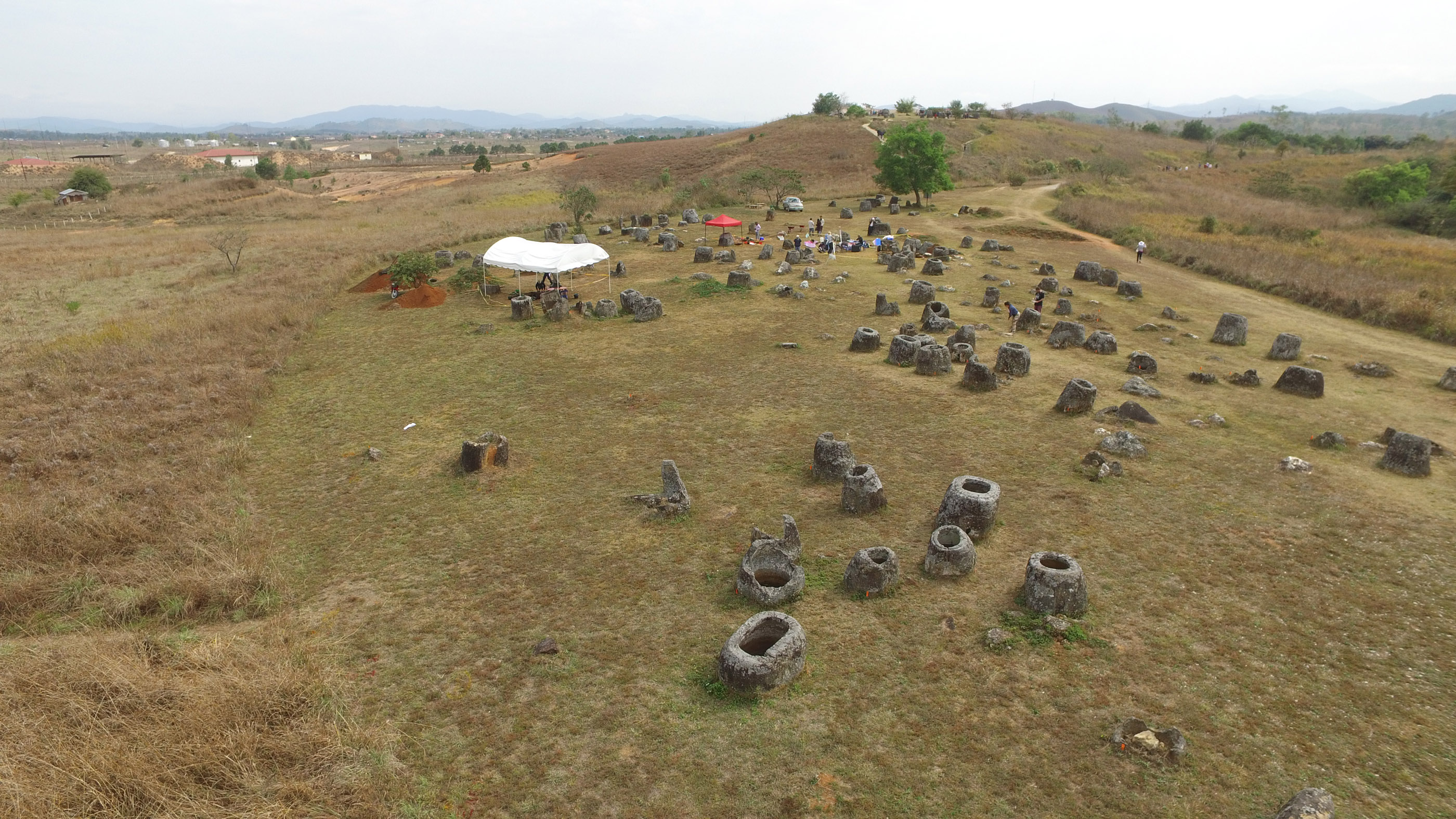
The mysterious Plain of Jars in northern Laos — a landscape dotted with massive stone jars hewn from sandstone thousands of years ago — was likely used as a burial site for much longer than previously suspected, and perhaps for up to 2,000 years, according to new research.
The massive jars, which were likely used to expose the dead to the elements until only their bones were left to be buried, could be more than 3,000 years old, new tests suggest.
But the research also suggests that most of the human remains buried in the ground beside the ancient jars were interred there between 700 and 1,200 years ago.
"What we surmise from that is the enduring ritual significance of these sites," University of Melbourne archaeologist Louise Shewan told Live Science. "They were important for a very long time."
Related: Photos: Exploring the mysterious Plain of Jars
Shewan and her colleague, Australian National University archaeologist Dougald O'Reilly, have studied the ancient stone jar sites since 2016 alongside archaeologist Thonglith Luangkoth of the Laos Department of Heritage in Vientiane.
Last year was their fourth annual expedition to the site, which came to a close just as travel restrictions were being put in place after the COVID-19 outbreak; some of the research from that expedition was published March 10 in the journal PLOS One.
Get the world’s most fascinating discoveries delivered straight to your inbox.
Mysterious burials
So far, the archaeological team has carefully studied three of the innumerable megalithic "jar sites" throughout northern Laos. For the new study they focused on the best-known of all of the sites, called Site 1, which is located just west of Phonsavan, and is one of 11 listed as a World Heritage site by UNESCO. It contains around 400 stone jars scattered across more than 60 acres (24 hectares).
The stone jars themselves are difficult to date accurately; a renowned French archaeologist, Madeleine Colani, reported in 1935 that she had found human remains in some of them, but modern archaeologists have not found datable human bones or teeth in any of the stone jars.
They have found evidence of three different types of burials at the jar sites, however — primary burials, where a full human skeleton was laid out; secondary burials, where bundles of human bones were interred; and burials in small ceramic jars that were then marked by distinctive quartz boulders on the surface. The buried ceramic jars are quite different from the massive stone jars above the ground; such jar burials were a relatively common form of burial in parts of Asia at different times.
But radiocarbon dating of the human remains from the ceramic jars and other burials suggest most of them were interred between the ninth and 13th centuries — between 700 and 1,200 years ago — which would make them much younger than the stone jars themselves.



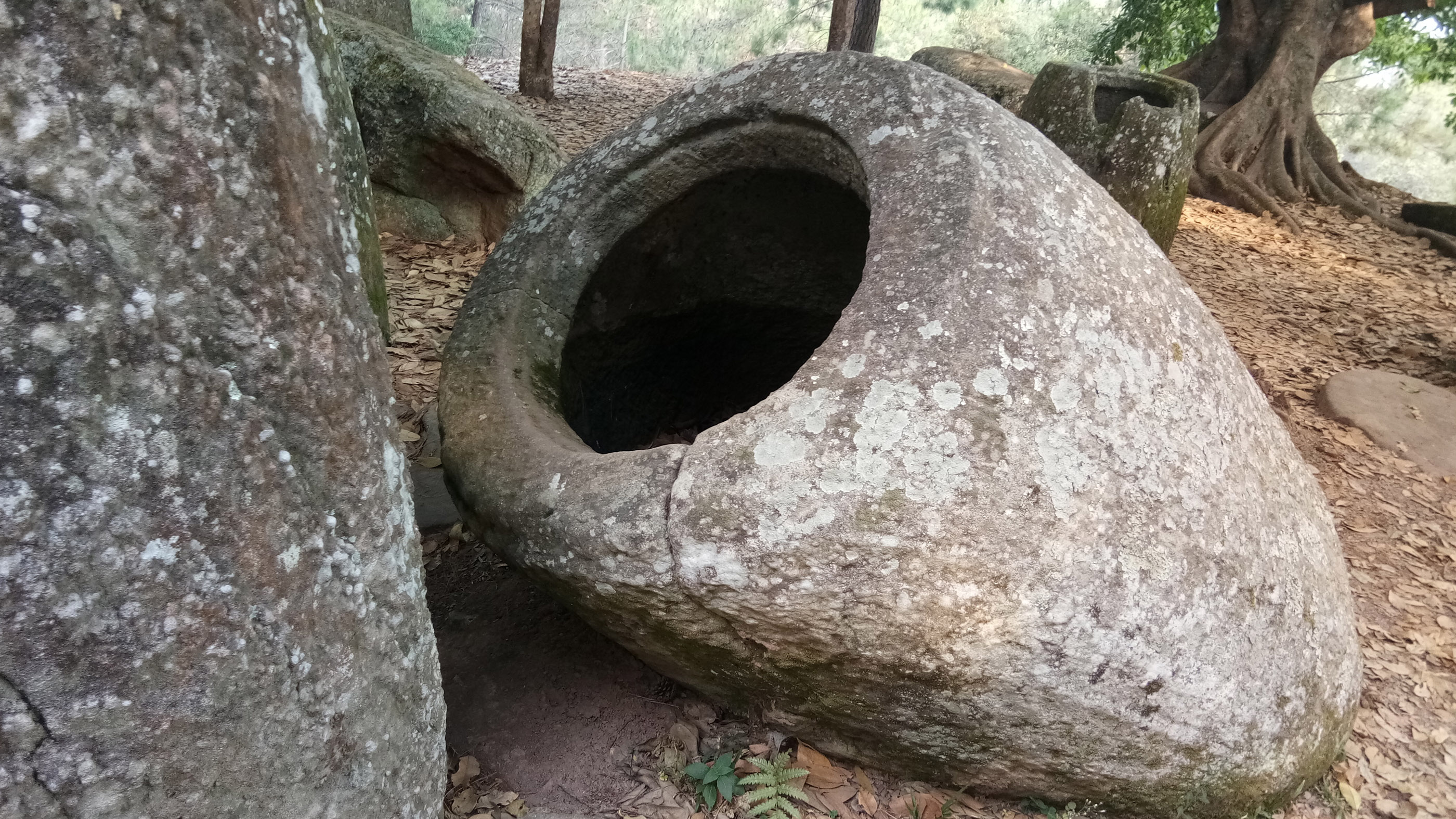
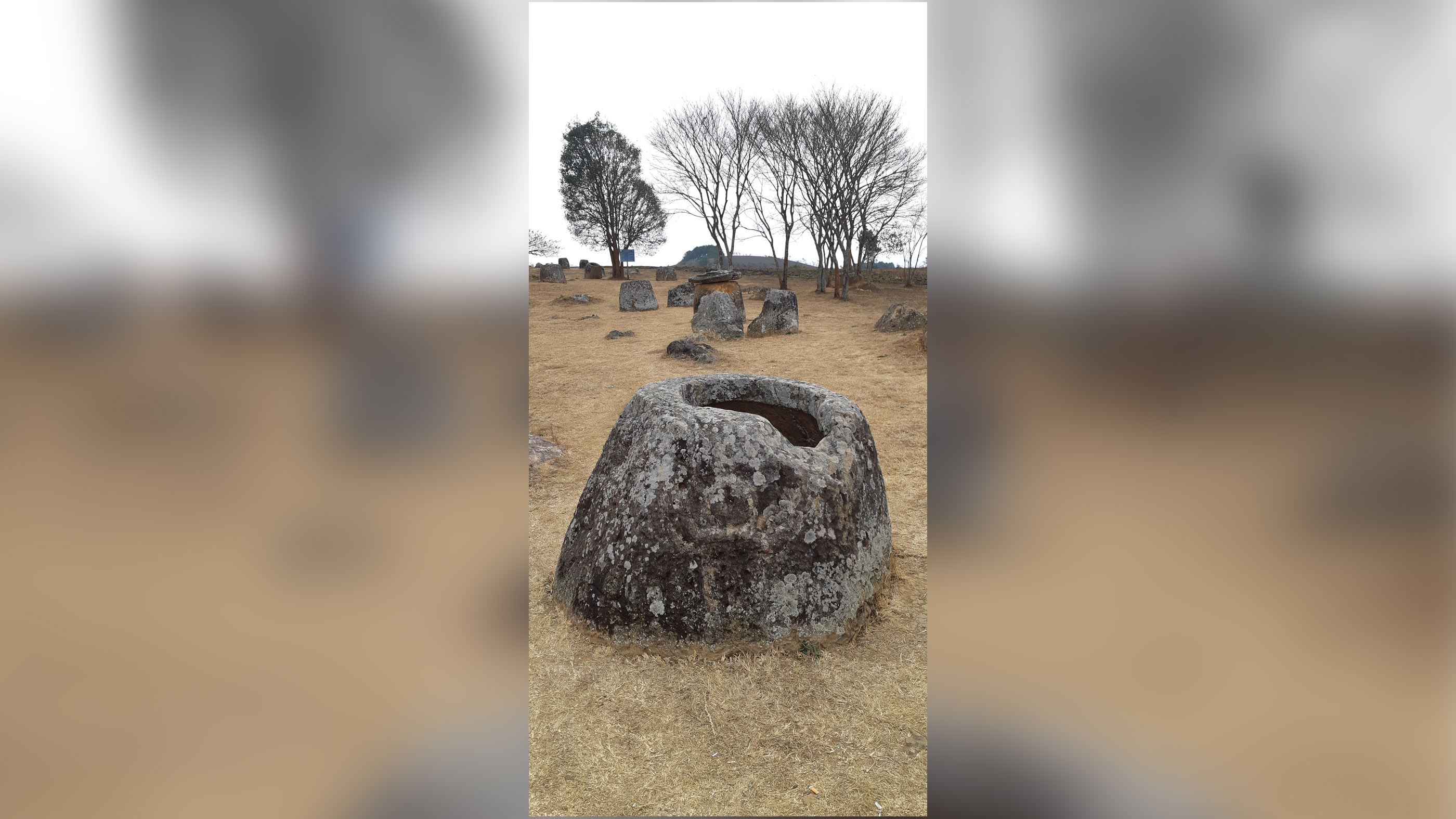
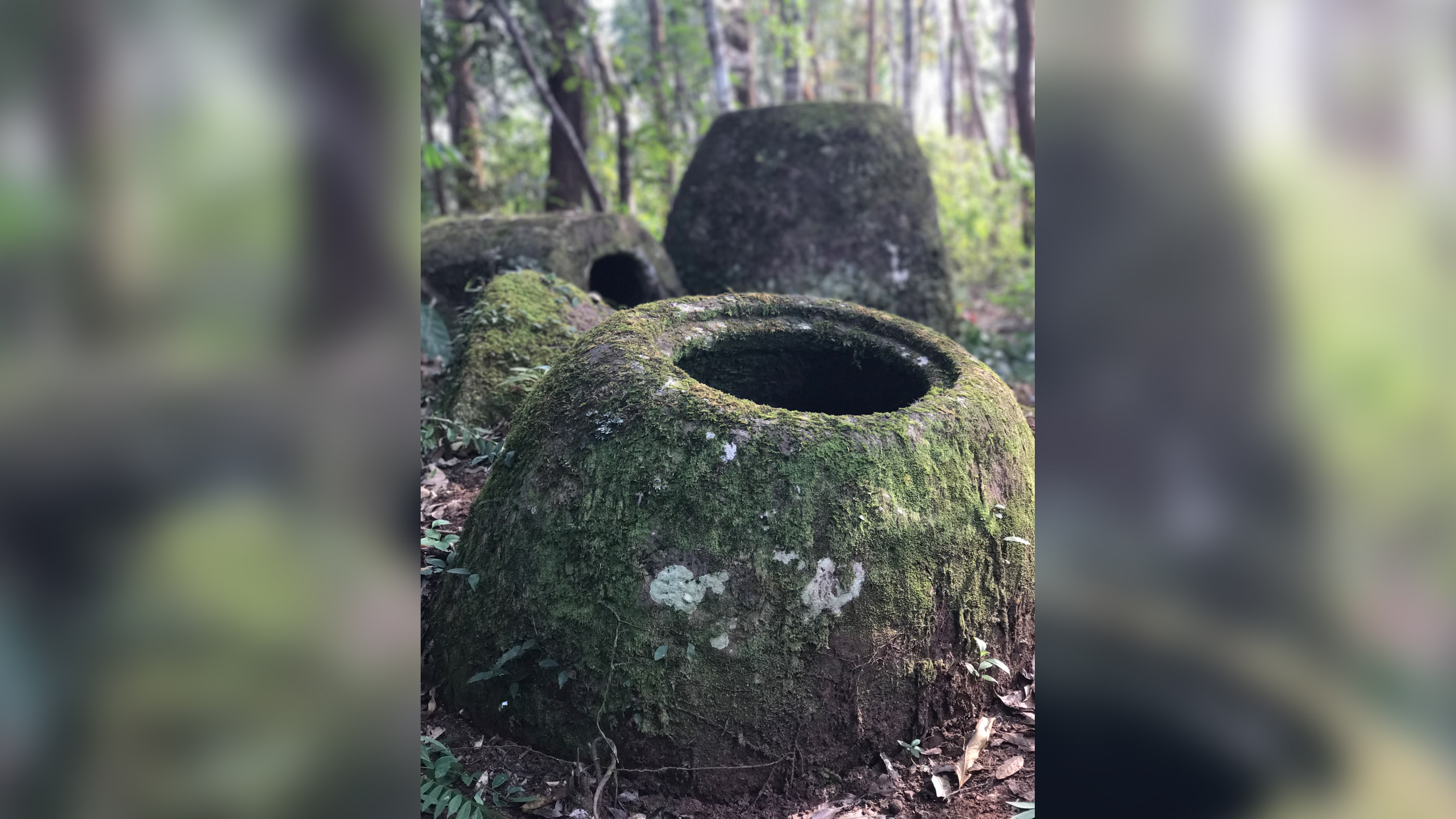

Ancient glow
The team led by Shewan and O'Reilly then used a technique called optically stimulated luminescence (OSL) on sediments, or the dirt recovered beneath some of the stone jars at Site 2, a few miles south of Site 1, to learn more about when they were placed there.
The technique measures the amount of ionizing radiation absorbed by grains of quartz within the sediments, a number that can be used to calculate when the grains were last exposed to daylight.
"Directly under one jar, we had a date range of 1350 to 730 B.C., and under another we had 860 to 350 B.C.," Shewan said. "I think we're going to find a range of dates as we continue the analysis."
These dates would make the stone jars much older than most of the burials in the ground around them, although more research will be needed to correlate the ages of the jars with the burials at the same sites, O'Reilly said.
The archaeologists can't yet tell if different peoples used the jar sites for mortuary practices at different times, or if later descendants of the original jar makers re-used the ancient sites for burials. "Whether they were culturally related to the people who made the jars is a question that we can't define yet," he said.
For the latest expedition to the Plain of Jars, the team also examined the ratios of different versions, or isotopes, of lead and uranium inside zircon crystals within the rock of the stone jars; these isotopes — forms of the same element with a different number of neutrons in the nucleus — can provide a "chemical signature" of their origin.
They determined that one of the stone jars at Site 1 had been brought from a sandstone quarry 5 miles (8 kilometers) away. "Whether the completed jars were dragged on some form of wooden rollers or sledge remains speculative," the researchers wrote in the study.
Originally published on Live Science.
Tom Metcalfe is a freelance journalist and regular Live Science contributor who is based in London in the United Kingdom. Tom writes mainly about science, space, archaeology, the Earth and the oceans. He has also written for the BBC, NBC News, National Geographic, Scientific American, Air & Space, and many others.


